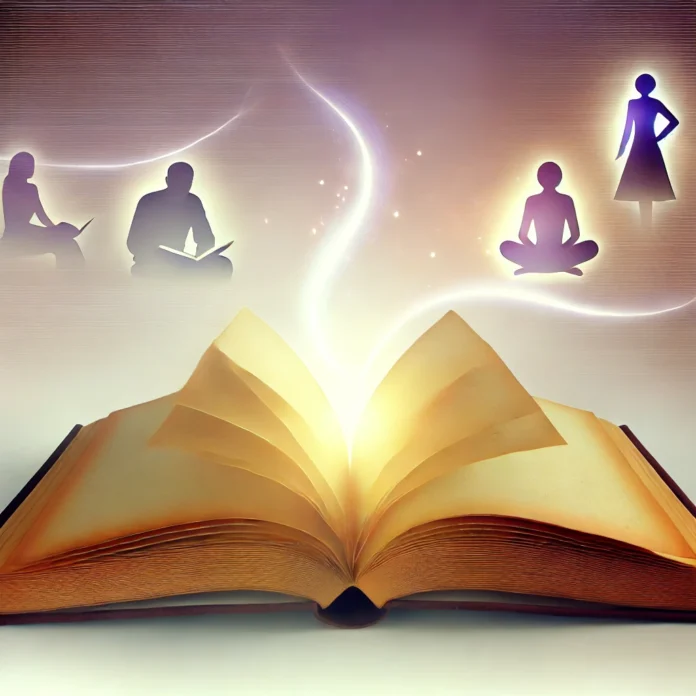Ardain Isma
CSMS Magazine
The relationship between writers and readers is one of mutual inspiration, a delicate dance that has existed for centuries. Writers craft worlds, characters, and stories, pouring their ideas, emotions, and reflections into the pages they fill. Readers, on the other hand, bring these words to life, interpreting them through their own lenses and experiences. This connection forms a dynamic and deeply symbiotic relationship where each party both inspires and is inspired by the other.
Writers: Giving Voice to the Human Experience
For writers, storytelling is a way of making sense of the world. They write not only to entertain but to share their insights, passions, and reflections on the human condition. The very act of writing is an outward expression of an inner dialogue—a way to grapple with questions about life, love, society, or identity. However, this process does not occur in a vacuum. Writers draw inspiration from many sources, but readers are one of the most significant.
The knowledge that there is an audience for their work propels writers forward. Whether writing for a specific group or a broader audience, the hope that their words will resonate with others is a powerful motivator. Feedback, even in its silent form of readership, encourages writers to continue, to refine their craft, and to push boundaries.
More than just a motivator, readers also serve as a compass for writers. Comments, reviews, and discussions provide valuable insights into how a story is received, helping authors to understand how their work is interpreted and what aspects evoke the strongest emotions. Some writers even engage directly with their audience, participating in forums or social media platforms to gather ideas, clarify intentions, or simply learn from the interpretations readers bring to their texts.
Readers: Breathing Life into Words
Just as writers inspire readers, the relationship works in reverse. Readers bring their own experiences, perspectives, and emotions to every story they consume. A single novel might evoke wildly different reactions depending on who is reading it and when. This diversity of interpretation is one of the greatest strengths of literature, as it allows stories to evolve in the minds of readers long after the final page has been turned.
Readers often find inspiration through the characters they encounter or the narratives that reflect their own challenges and dreams. The right story at the right time can profoundly affect a person’s life, sparking new ideas, changing perspectives, or encouraging personal growth. Some readers, particularly aspiring writers, are so moved by what they read that they feel compelled to write themselves. A great story can plant the seed for future creativity, pushing readers to explore their own voices.
Moreover, readers can become advocates for writers, sharing their favorite stories and helping to expand a writer’s reach. This advocacy forms an important part of the ecosystem, as word-of-mouth recommendations have historically been one of the most powerful tools for the success of a book. In this way, readers actively shape the literary landscape, elevating certain voices and ensuring that the stories that matter to them are heard by a wider audience.
The Cycle of Mutual Inspiration
What truly makes the relationship between writers and readers symbiotic is that inspiration flows in both directions. Writers pour their creativity into stories that touch the hearts of readers, who in turn engage with and interpret these stories in ways that extend their impact. This engagement then feeds back into the writer’s creative process.
Many authors have spoken about how fan reactions or unexpected interpretations of their work have influenced subsequent stories. Some have gone so far as to incorporate reader suggestions into their next book or to explore themes their audience showed particular interest in. For others, simply knowing that their words resonated with someone else is enough to inspire them to keep writing.
Similarly, readers often become part of a writer’s journey, following their favorite authors through various works and life stages. This long-term engagement creates a sense of community, where both parties support and inspire one another in an ongoing dialogue through stories.
Finally, I must say that the relationship between writers and readers is one of the most unique and powerful creative partnerships in existence. Writers provide the raw material—their words, stories, and imagination—while readers bring those creations to life through interpretation, emotion, and advocacy. Each depends on the other to thrive: writers need readers to validate their creative output, while readers look to writers to fuel their imaginations and provoke their thoughts.
In this way, the relationship between writers and readers is a true symbiosis, a beautiful dance of mutual inspiration that has shaped the literary world for centuries and will continue to do so for many more.
 Note: Ardain Isma is the Chief-Editor of CSMS Magazine. He is the author of several books, including Midnight at Noon, Bittersweet Memories of Last Spring, and Last Spring was Bittersweet. You can order these books by clicking on the links above.
Note: Ardain Isma is the Chief-Editor of CSMS Magazine. He is the author of several books, including Midnight at Noon, Bittersweet Memories of Last Spring, and Last Spring was Bittersweet. You can order these books by clicking on the links above.


